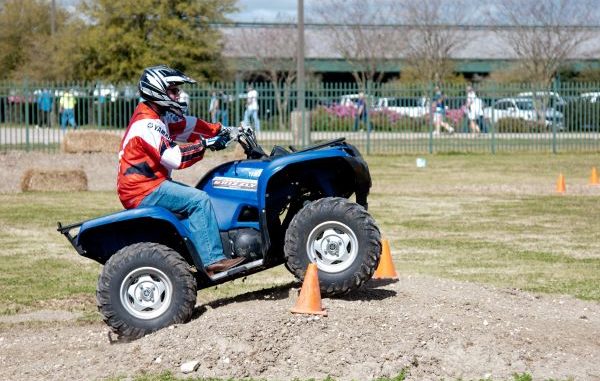
Single biggest factor is making sure children under 16 do not operate adult-sized four-wheelers
With both duck and deer seasons in full swing now, many hunters, along with their children and grandchildren, will be taking four-wheelers and recreational off-highway vehicles (ROVs) to deer stands, camps and duck blinds across the state.
And while it’s pretty common for kids to drive ATVs and ROVs here, it’s important to remember that manufacturers recommend that no under under 16 ever operates an adult-sized unit.
Just last week, a 14-year-old Houma Junior High School student died while racing in an off-road vehicle in a subdivision, according to Houma police.
“Many people overestimate their child’s capability on these very large machines,” said Karen Ahmad, the injury prevention and community outreach nurse for the Alliance Safety Council and Our Lady of the Lake Children’s Hospital in Baton Rouge. “But they’re very unforgiving when something goes wrong.
“Probably the primary major factor in critical and fatal injuries for children is kids who are riding on adult-sized vehicles. Size really does matter in this, and it’s the single biggest factor in critical and fatal injuries in children on four-wheelers.”
ROVs, which more resemble a golf cart and have a steering wheel, can also be dangerous, especially when operated on public streets and roads, she said.
“Generally speaking, people take liberties with these machines on the road that are putting them at pretty high risk. Kids don’t have a working knowledge of traffic safety, nor do these vehicles handle well on paved surfaces,” Ahmad said. “They’re intended to grip soft ground, not a paved surface, so they’re really not recommended for use on roads and the manufacturers’ specifically warn against it.”
And it’s important to remember that loading down a four-wheeler, either with equipment, passengers or the deer you just pulled out of the woods, will unbalance the unit and alter its center of gravity.
“These are rider-active units,” she said. “You need to move forward, backwards and side-to-side as you control the unit, and if you have passengers you’re carrying on there, that inhibits your ability to safely operate the machine.”
While a helmet is always a good idea, Ahmad said it is important for people to realize other very serious or fatal injuries happen that don’t necessarily involve your head.
“I must tell you that only 30-percent of the critical and fatal injuries we see are head injuries,” she said. “Seventy-percent of the very serious injuries involve other parts of the body. A helmet isn’t going to prevent you from getting a broken back, a broken neck or an amputated leg.
“You want to wear a helmet because it might keep you out of the fatality category, but it’s not necessarily going to keep you from being seriously injured on these units.”
She recommended that everyone, especially operators under age 16, take a free online training course from the ATV Training Institute, and follow that up with formal training from a certified instructor.
“Most people don’t think it could happen to them. They think that they know what they’re doing, and this is something that happens to other people who make stupid mistakes. And it’s not. It’s very predictable and it’s very preventable,” she said. “When you take the training that the ATV Training Institute offers, you can kind of see how people get into trouble and you can see how to avoid that trouble.
“So I strongly recommend to anybody who’s involved with these 4-wheelers: dot your I’s, cross your T’s, get your safety gear and go take formal training.”
Click on the link to see the ATV Training Institute’s Golden Rules, or visit atvsafety.org and atvsafety.gov for more information on the safe operation of these machines.


